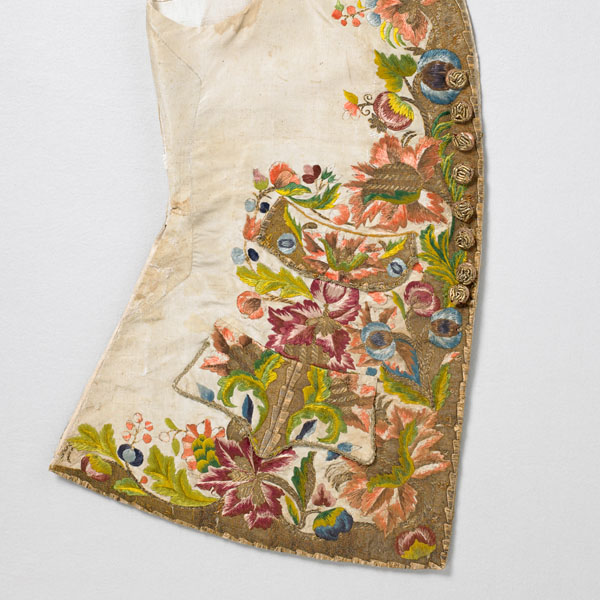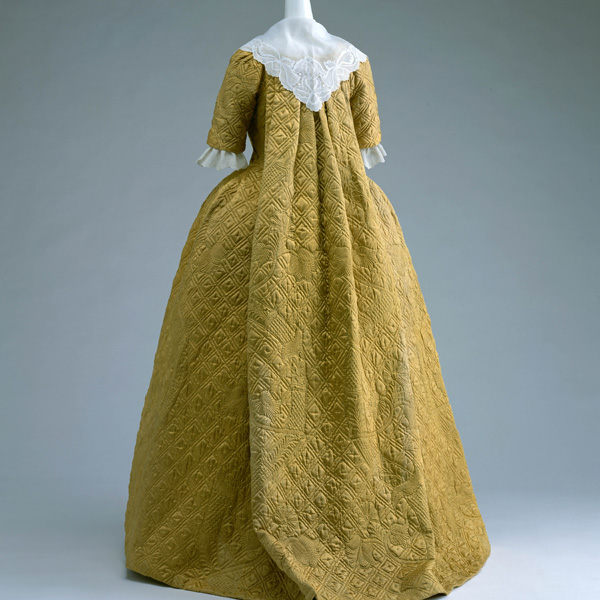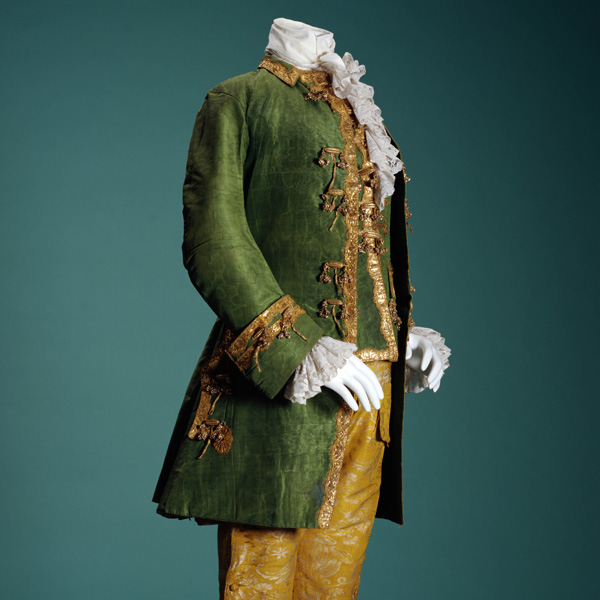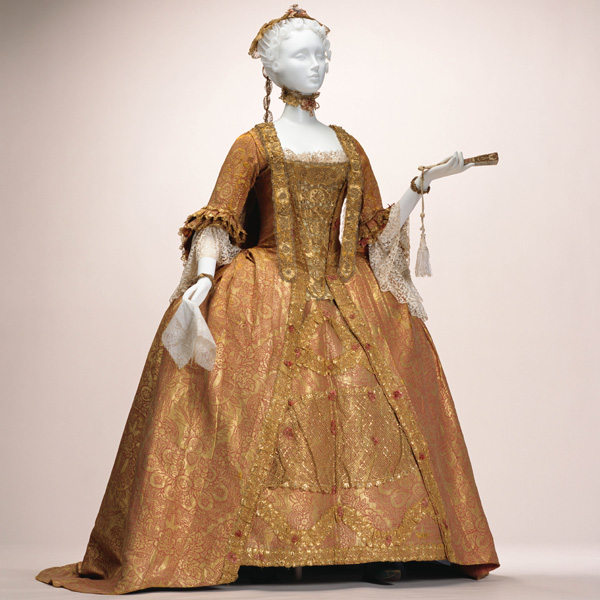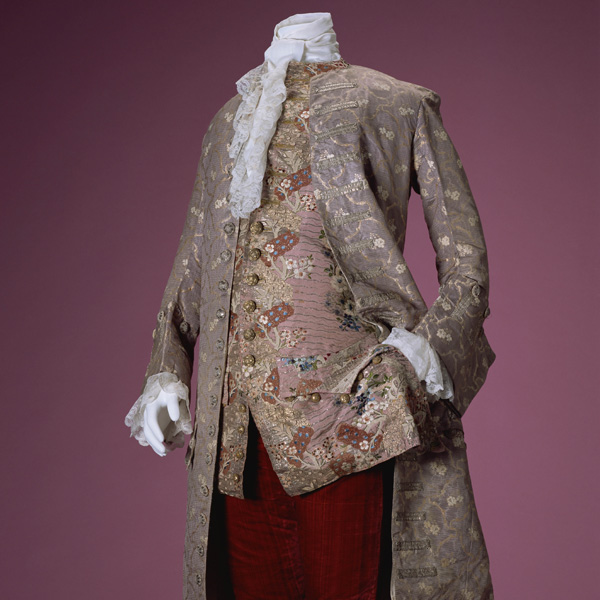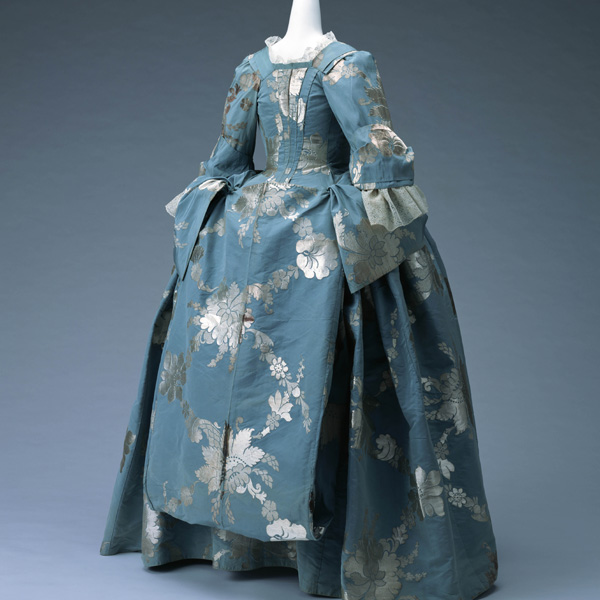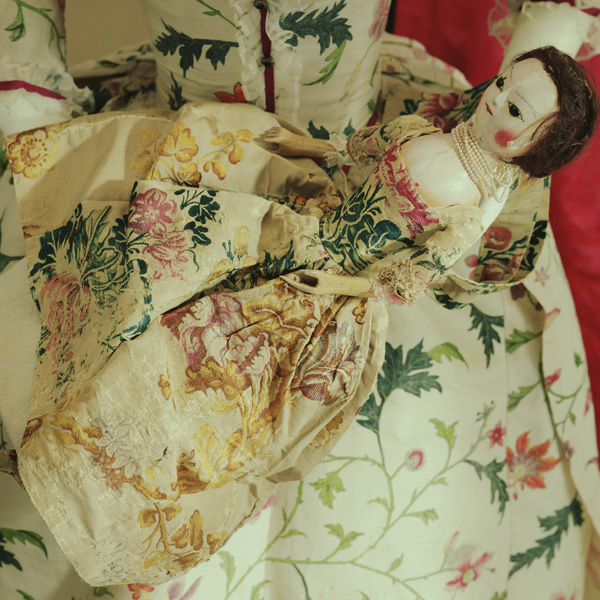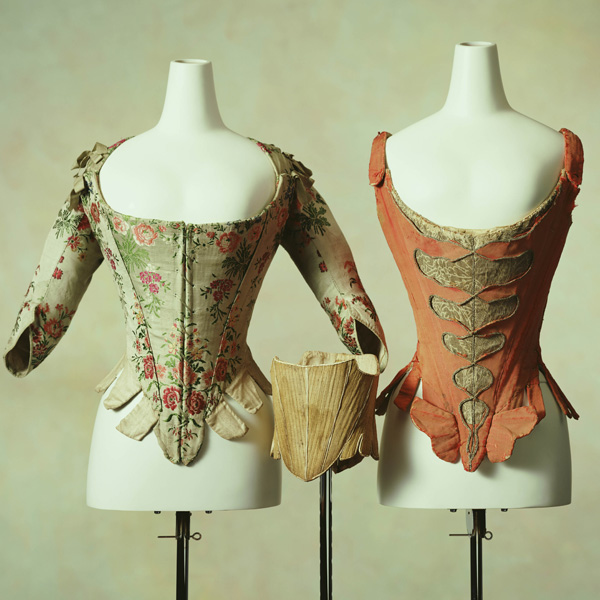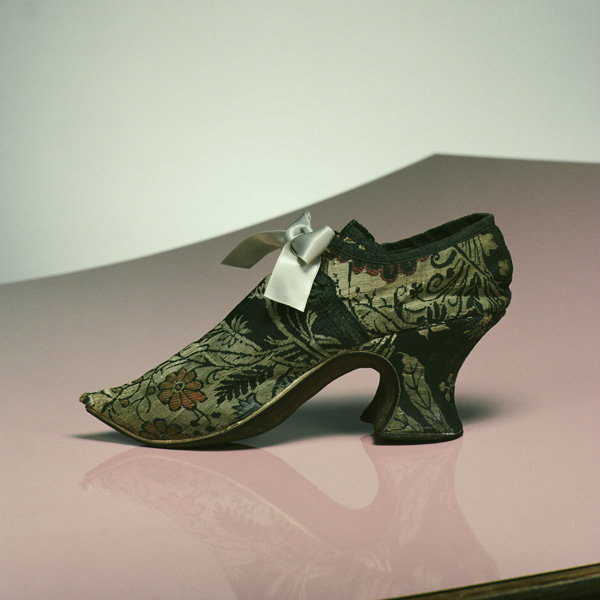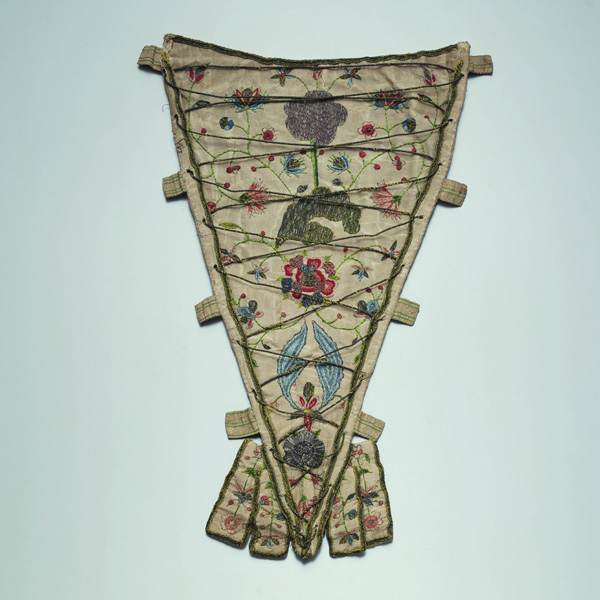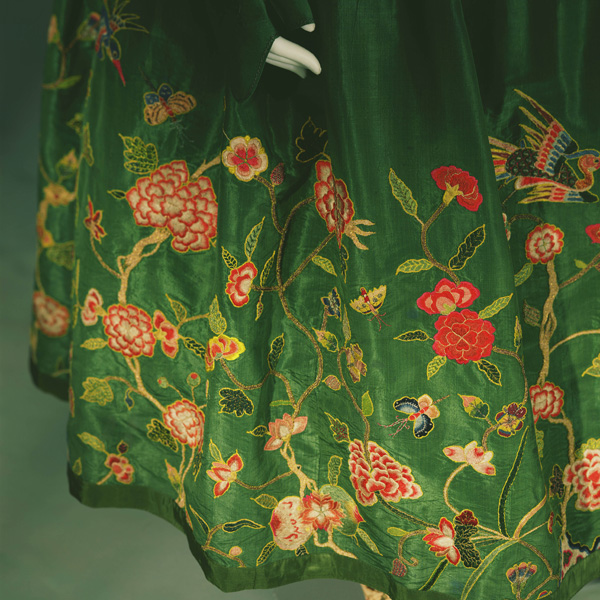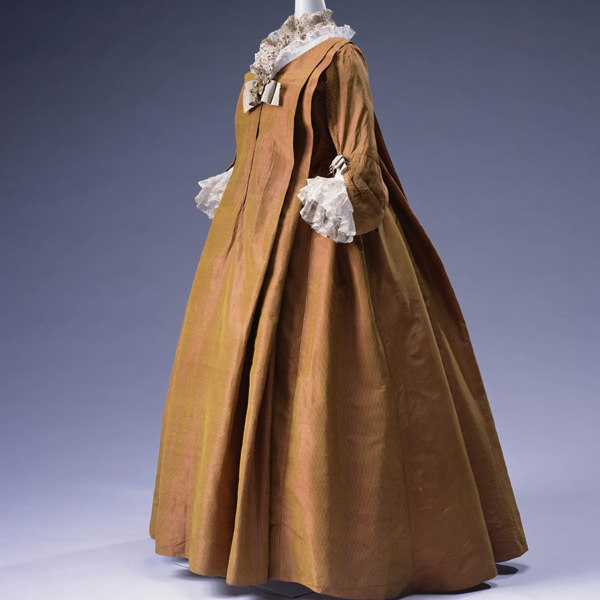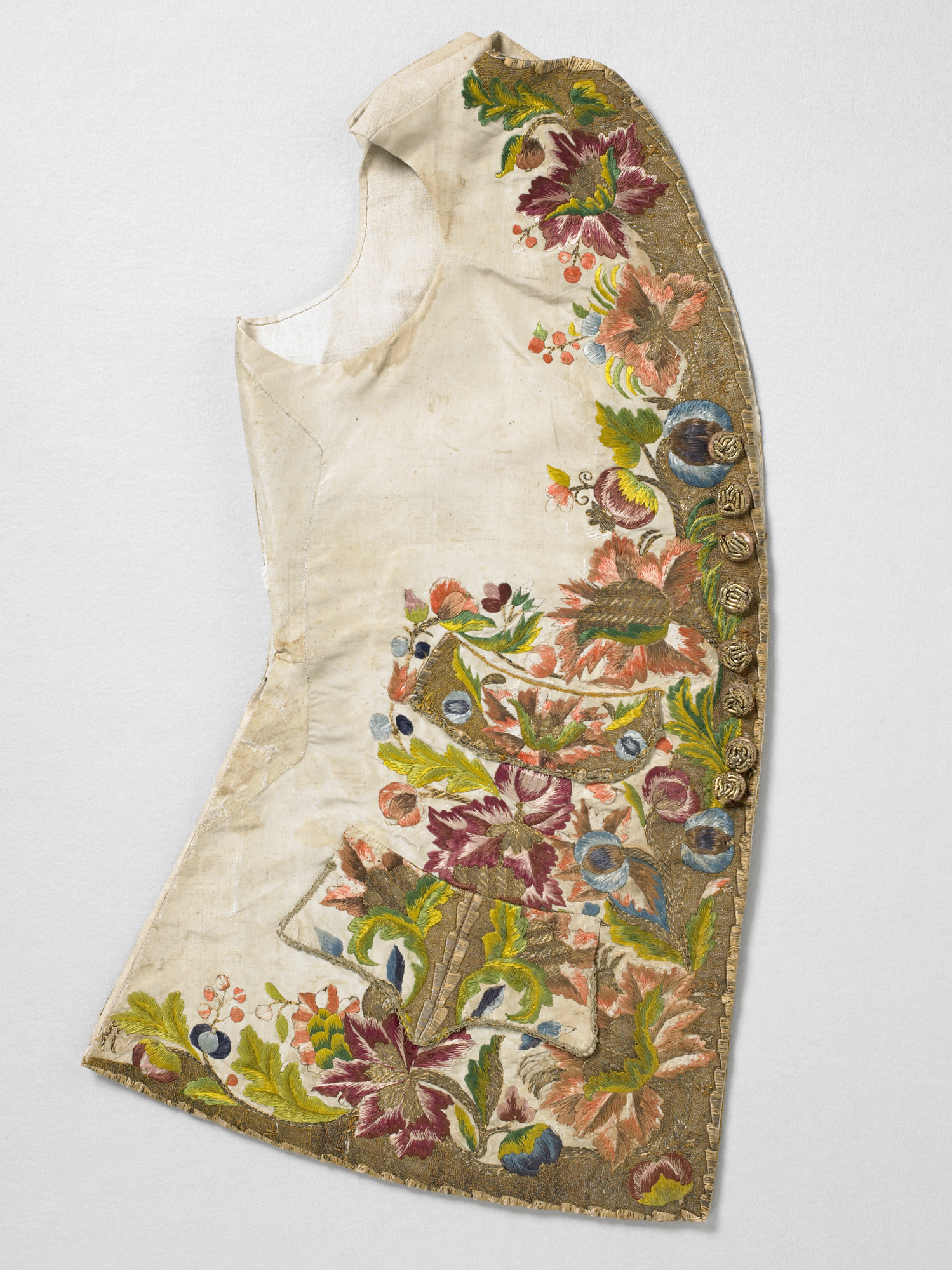
© The Kyoto Costume Institute, photo by Masayuki Hayashi
You can enlarge by putting the mouse cursor on the image.
Waistcoat
1730s
- Material
- Beige silk taffeta with floral pattern, embroidered with colored silks and gold and silver threads; sleeveless; 8 buttons covered with coiled gold thread; beige plain-weave linen for the back.
- Inventory Number(s)
- AC3862 81-18-2
An eighteenth century man’s waistcoat (vest). Colorful, sumptuous flowers have been embroidered from the chest down to the hem with gold and silver thread as well as dyed silk thread. Altering the type of thread or stitching depending on the pattern delivers a finish that is richly expressive.
The waistcoat began to be worn as court attire from the seventeenth century in combination with the justaucorps style of coat. Although originally the same length as the coat and typically having sleeves, with richly decorated textile used for the front and the cuffs, over time the waistcoat became shorter, while the sleeveless style, as in this example, became established from around the mid-eighteenth century. The lavish fabric used for the waistcoat could be glimpsed through the coat’s front opening. As the cut of the front hem of the coat was curved away gradually over the eighteenth century, the visual importance of the decoration on the waistcoat also began to grow. Favored decorative techniques shifted from heavy woven patterns to light and delicate motifs largely produced by embroidery.
 Digital Archives
Digital Archives